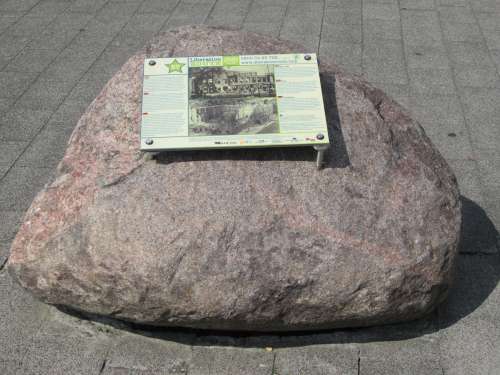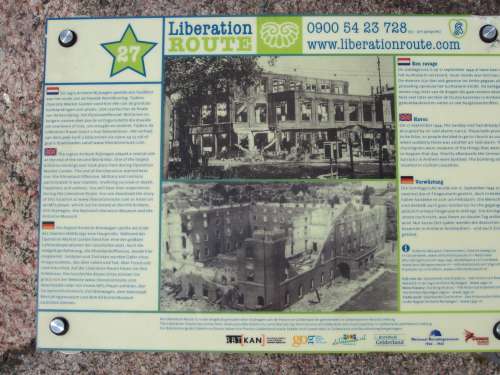Liberation Route Marker 027: Havoc
Havoc
On 17 September 1944, the Sunday rest had already been disrupted by air raid alarms twice. These both proved to be false, so people decided to go to church as usual when suddenly there was another air-raid alarm. The churchgoers were unaware of the things that were about to happen that day. Shortly afterwards the German barracks in Arnhem were bombed. The bombing also resulted in civilian casualties.
On 17th September 1944, 10,000 British parachutists landed near Arnhem to try and secure the bridge over the River Rhine. Prior to this airborne operation, the Allies bombed German positions and barracks in the area, including the Willemskazerne barracks in Arnhem. These were situated in the middle of the town, but bombs also hit the surrounding buildings. The Restaurant Royal, the HBS on Willemsplein square, the barracks of the Wehrmacht on Bloemstraat street, the Menno van Coehorn barracks on the Hoflaan lane, the warehouses on the Beekstraat street, the Vijverlaan lane, Sint Catharina's hospital
Do you have more information about this location? Inform us!
Source
- Text: TracesOfWar & Liberation Route Europe
- Photos: Suzan Vrieze
Nearby
Museum
Point of interest
Monument
- Phoenix Arnhem - Arnhem
- Memorial Evacuation Arnhem - Arnhem
- Evacuation Memorial 'Vlucht' Arnhem - Arnhem
Cemetery
- Commonwealth War Grave Jewish Cemetery Moscowa Arnhem - Arnhem
- Dutch War Graves General Cemetery Moscowa Arnhem - Arnhem
- Commonwealth War Graves General Cemetery Moscowa Arnhem - Arnhem
Remembrance Stone
- Stumbling Stones Rijnstraat 43 - Arnhem
- Stumbling Stones Wielakkerstraat 34 - Arnhem
- Stumbling Stones Zijpendaalseweg 1D - Arnhem
Fortification
- Two Kockbunkers Museum Arnhem - Arnhem
- Kochbunker Arnhem - Arnhem
- Concrete Encased M4 Sherman Tank - Arnhem





